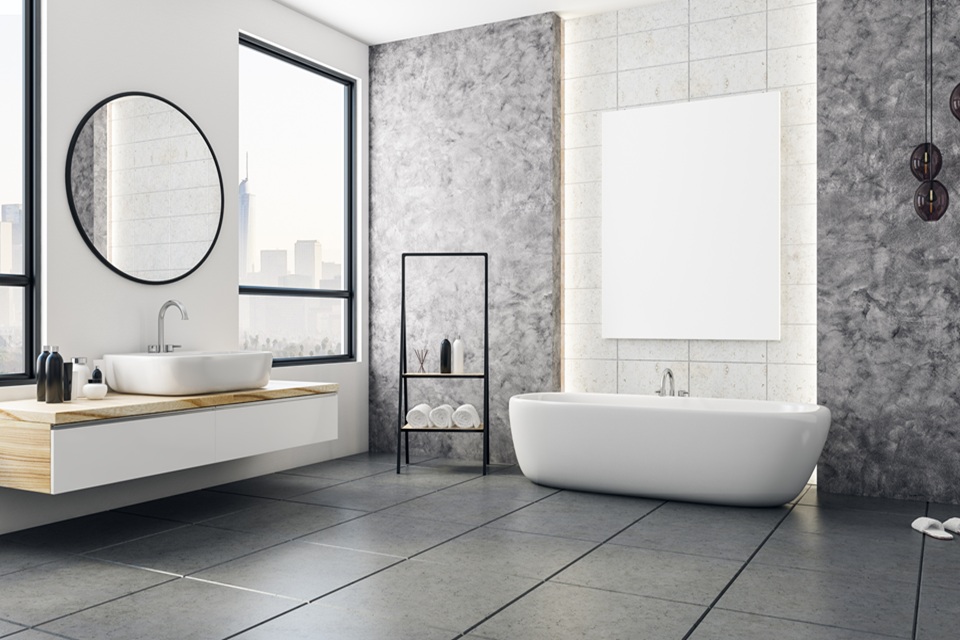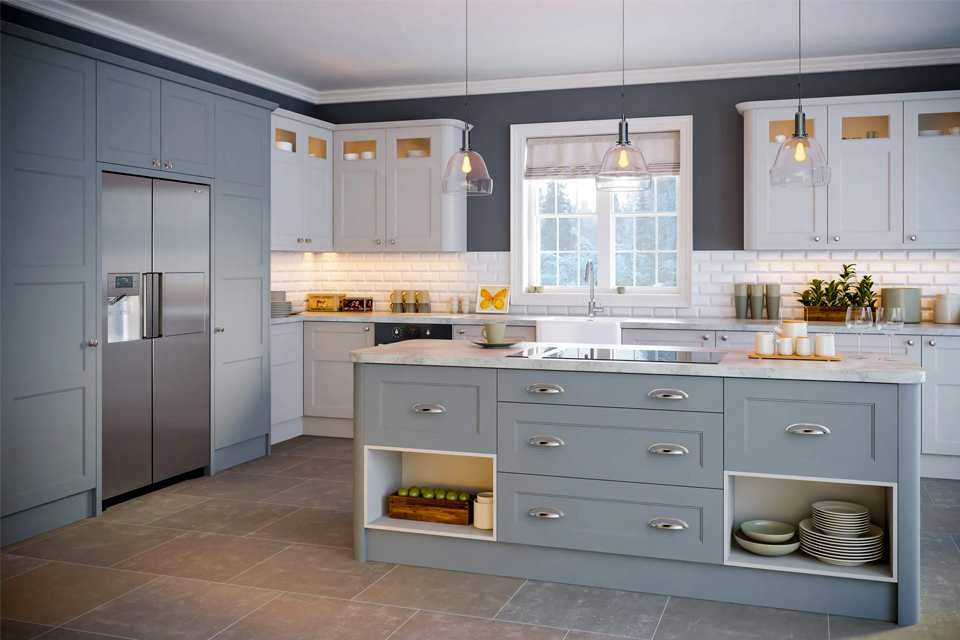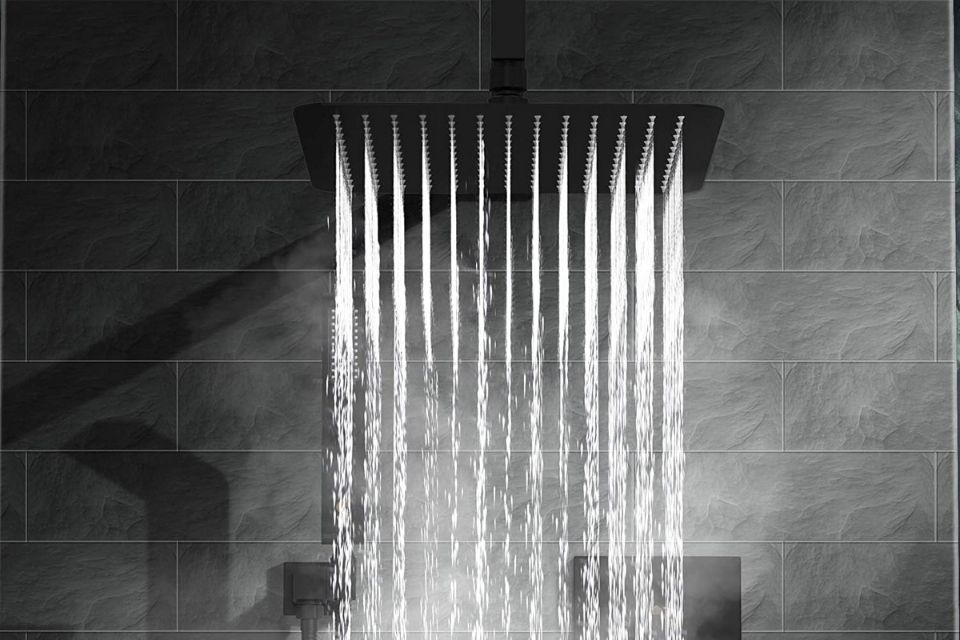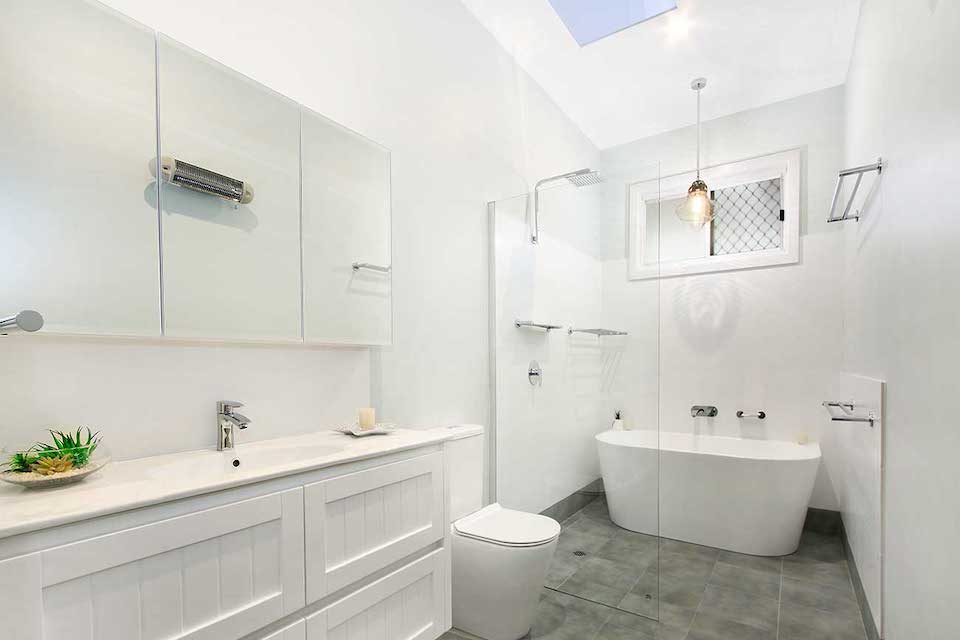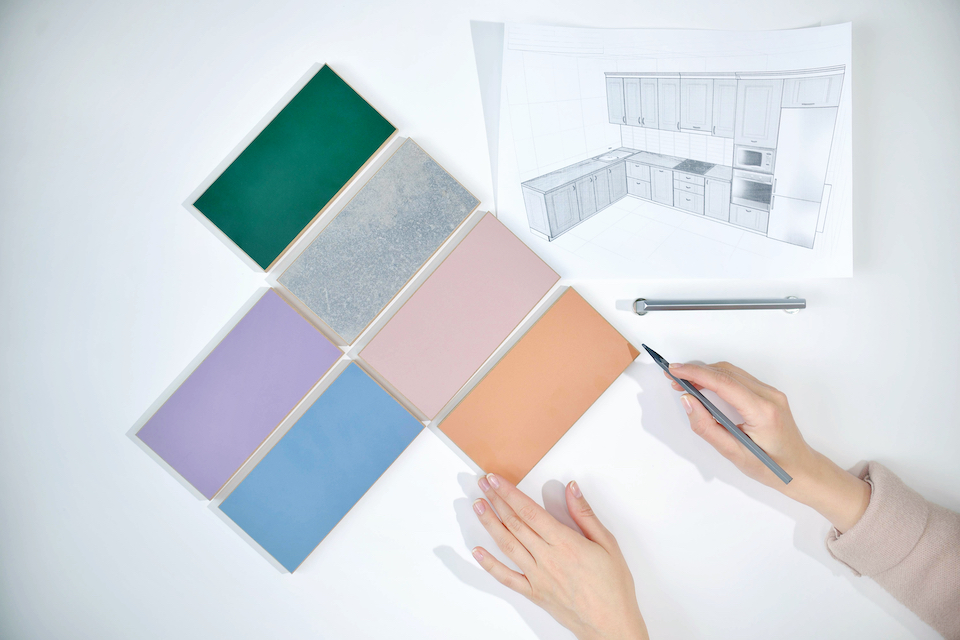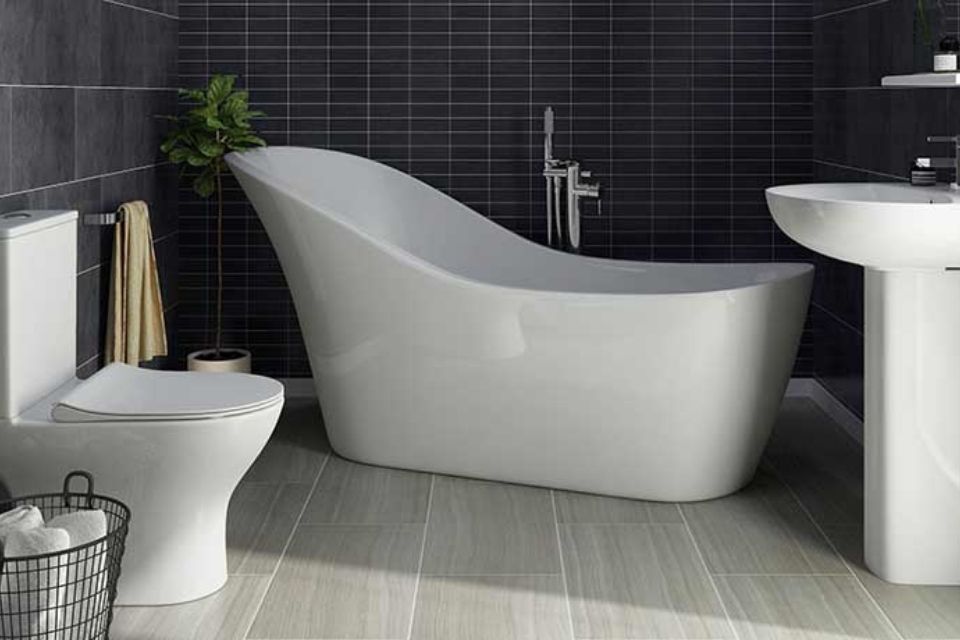As a key element of your bathroom, you want to get the flooring right. With this in mind, HomeHow divulges some of the most common bathroom flooring mistakes people make so you can avoid them.
- Poor Preparation
- Choosing Incorrect Materials
- Ignoring Slip Resistance Ratings
- Going for Trendy Over Practical
- Picking the Wrong Tile Size
- Not Planning Out Tile Placement
- Underestimating How Many Tiles You Need
- Overlooking the Importance of Adhesive, Grout and Spacers
- Not Considering the Impact of Light
- Failing to Hire a Professional
- Final thoughts
Poor Preparation
Poor preparation is one of the most common bathroom flooring mistakes. Not preparing your floor’s base properly can mean you’re tiling on a surface that's bendy or uneven, and this typically leads to cracking. Not making sure the subfloor is smooth and flat before you lay vinyl will leave you with a bumpy-looking floor that’s vulnerable to tearing.
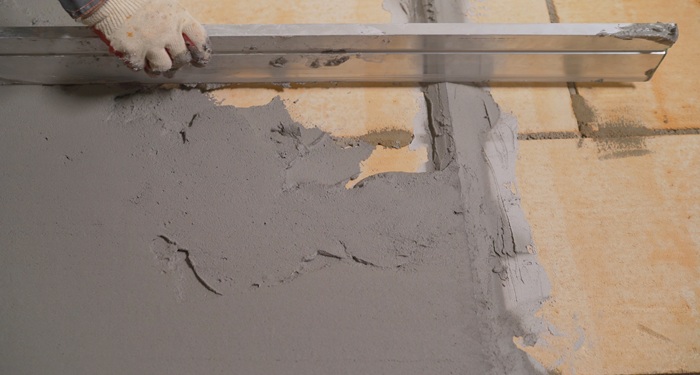
- Prepping a Concrete Subfloor – You need to remove any residual adhesive and clean it so it’s free from dust and grease. You’ll also need to fill in any cracks or use a self-levelling compound if there are lots of imperfections. It then needs sealing.
- Prepping Floorboards – You’ll need to fix down loose boards first and then lay a plywood subfloor over the top. An 18mm to 25mm thick WBP or marine plywood is usually best. This will need screwing in place to prevent movement.
Choosing Incorrect Materials
Choosing materials that simply aren’t designed for high-moisture environments, like carpet and wood, is a recipe for disaster. This can lead to a mouldy, smelly and rotten bathroom floor. Using natural stone without proper sealing is another mistake that’s commonly made.
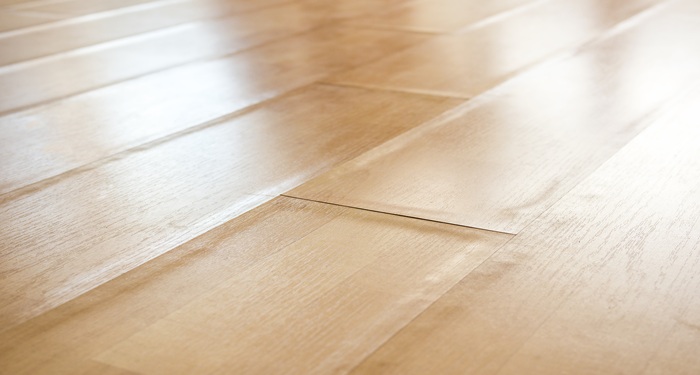
Stick to using products that are recommended for use in bathrooms. Check the product description online or the information on the packaging in-store to be sure it’s suitable and avoid anything that’s too porous or absorbent.
Ignoring Slip Resistance Ratings
Although glossy tiles can give bathrooms a luxurious feel, they can be very slippery when wet. This can make it difficult for your bathroom to be used safely. Matt and textured tiles typically offer a grippier surface, but without checking the slip-resistance rating of a tile, you can’t be sure.
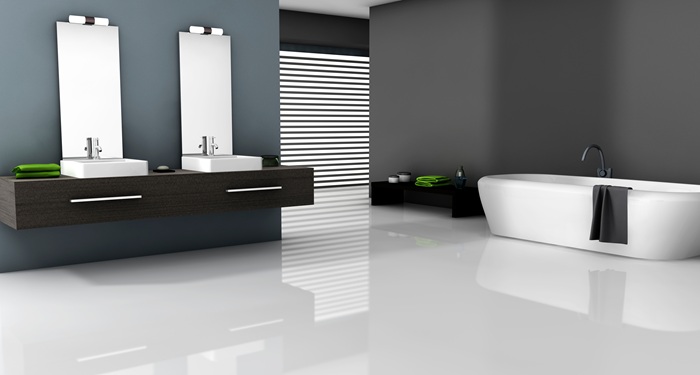
- R9 and R10 Rating – Tiles with this rating are likely to be slippery when wet. Therefore, it's recommended that you use a bath mat to improve the safety of your bathroom.
- R11 and R12 Rating – These tiles have a good level of slip resistance when they’re wet and dry. So, they’re seen as safe for bathrooms and wetrooms.
- R13 Rating – This offers a higher level of slip resistance, making it the best choice for protecting vulnerable family members.
Going for Trendy Over Practical
We’re all keen to follow the latest interior trends, but if you choose your flooring based purely on what’s fashionable rather than what’s practical, you’re making a mistake.
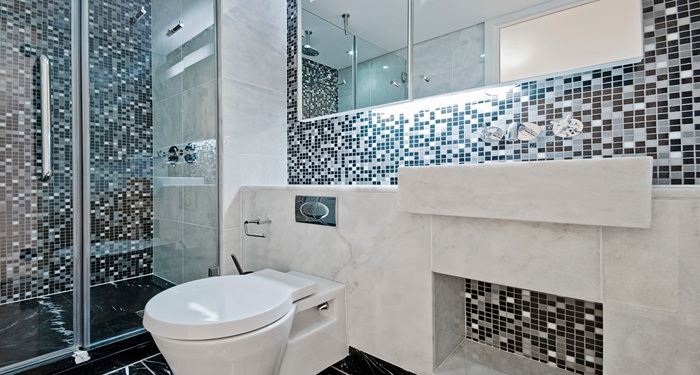
Firstly, the flooring might not be suitable for the bathroom. It might also date very quickly, leading to regret. You may also find that going for a particular on-trend stone or mosaic tile on your floor could leave you with a bathroom that’s high-maintenance and difficult to clean.
Picking the Wrong Tile Size
If you’re tiling your bathroom floor, the tile size matters. But it’s very easy to get this wrong. For instance, the smaller the tiles you choose, the more grout lines you’ll have.

So, this might not be the best choice if you’re looking for a seamless design or luxury feel. They can also make a small bathroom look too busy. However, large tiles can be harder to install in small spaces and may result in more wastage, so it’s not always the most cost-effective option.
Not Planning Out Tile Placement
If you’re tiling a compact bathroom, it’s essential to plan out your tile placement first. The central area of your bathroom floor is going to be the most noticeable, so you want to make sure you end up with whole tiles throughout this area – otherwise, it’s going to look odd. You also want to plan your tile placement in a way that reduces the number of tile cuts you need to make.
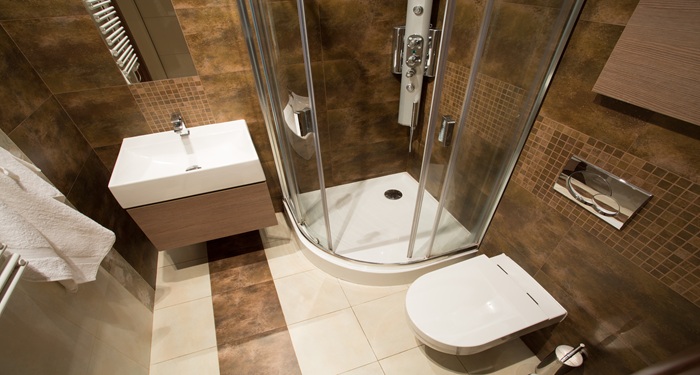
Underestimating How Many Tiles You Need
Another common bathroom flooring mistake is failing to order enough tiles or planks. Measure the floor area and use a tile calculator to work out how many you need to buy, but remember to add at least 10% to that total to account for cuts, mistakes and breakages. Not doing so risks you having mismatched tiles or planks on your floor.
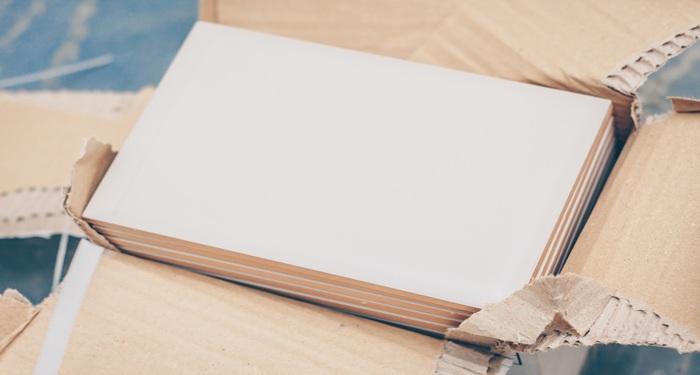
Overlooking the Importance of Adhesive, Grout and Spacers
When tiling a bathroom floor, it’s a mistake to only put thought into the tiles. The adhesive, grout and spacers are also important. What you choose will affect the durability and overall look of the floor.
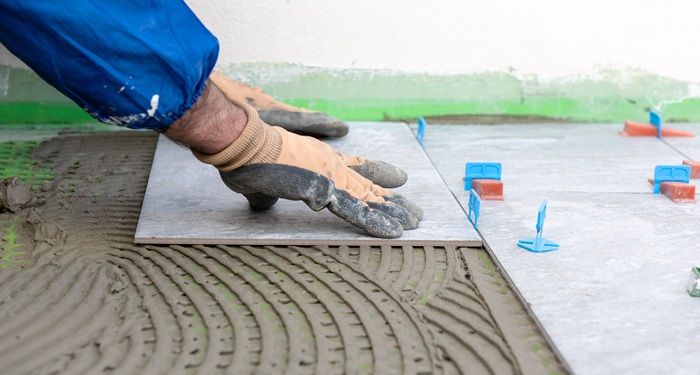
A flexible adhesive is often recommended for wooden subfloors, while a high-bond adhesive is preferable for most solid floors.
Tile spacers for flooring typically vary between 5mm and 10mm. If you want a clean-lined bathroom, thinner spacers are probably better, but if you want a grippier floor or want to add more texture to your bathroom, wide spacers are best. If you're using colourful grout to contrast with your tiles, you might also prefer a wide spacer.
Although white grout can give your bathroom floor a bright, fresh feel, think about how easy it’s going to be to keep it that way.
Not Considering the Impact of Light
Not considering how your bathroom lighting will affect the appearance of tiles and vinyl coverings is another common mistake. For instance, the more of a sheen a surface has, the more dirt and smudges will show up.
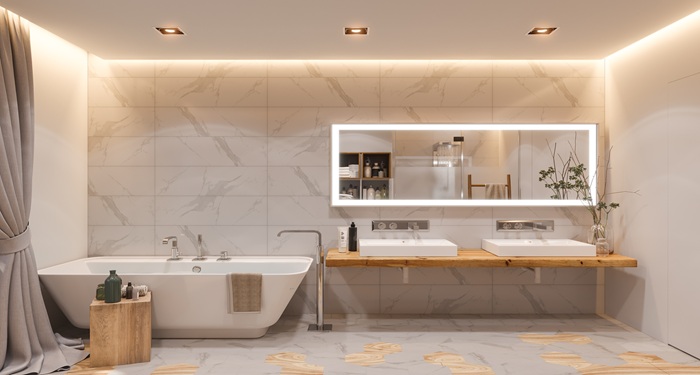
The tone of your bathroom lighting can also have an impact. For instance, cool white light bulbs can make certain tile colours look cold. So, it’s wise to order samples and test them out under your bathroom lights to make sure they look right.
Failing to Hire a Professional
Fitting a bathroom floor isn’t always that straightforward, so it often makes sense to hire a professional. This won't simply save you time; it can save you from making costly mistakes.
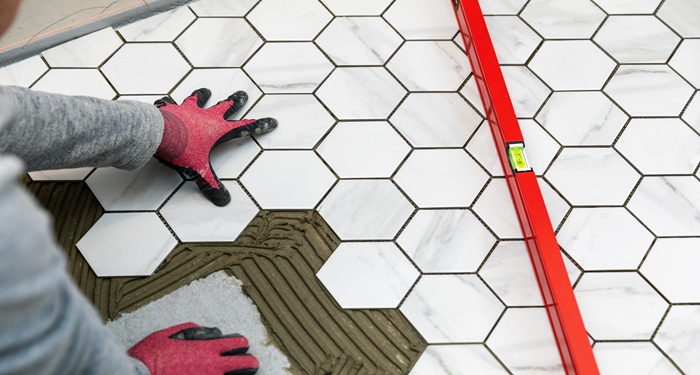
Final thoughts
No matter what type of bathroom floor you’re thinking of installing, it’s important to base your choice on practicality as well as style. It’s also essential that you don’t skip the preparation and planning stages if you want to avoid common flooring pitfalls. As this can take time and skill, it’s often best to call on the expertise of trades.

